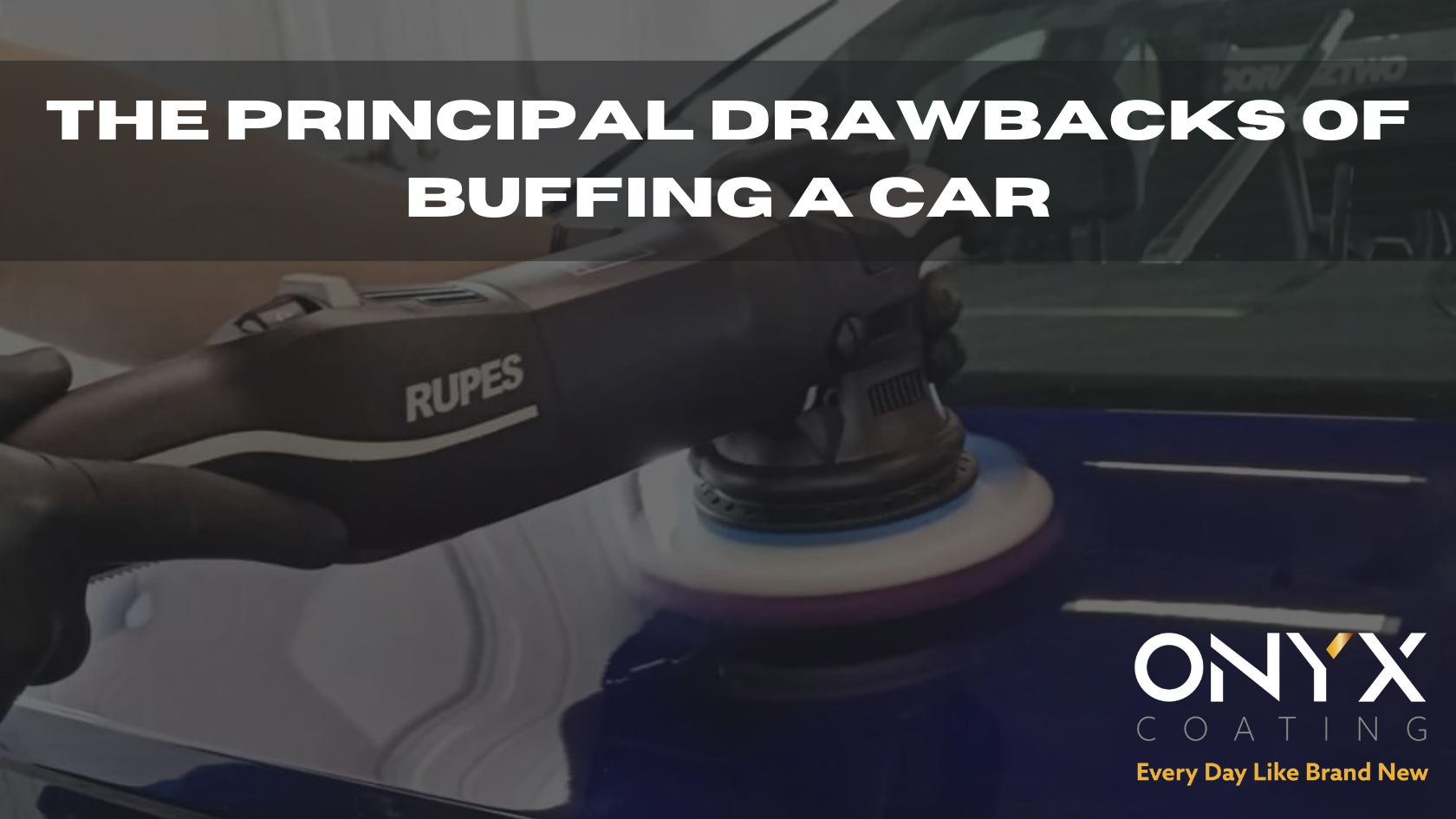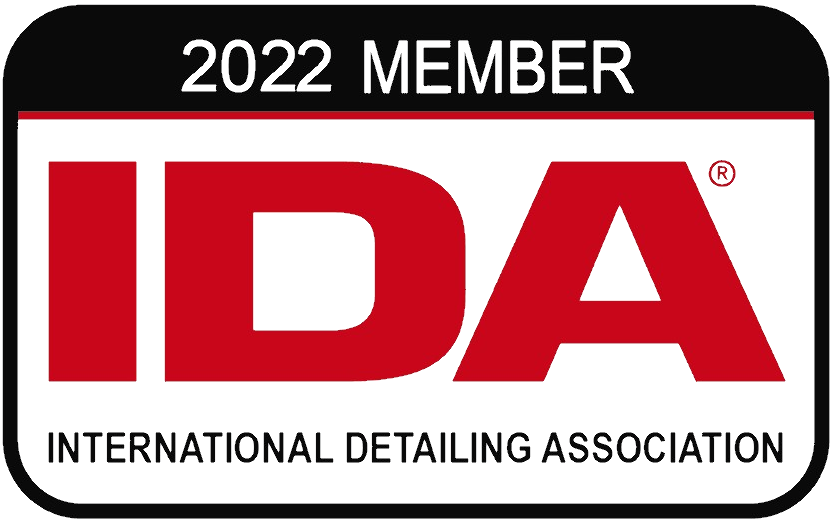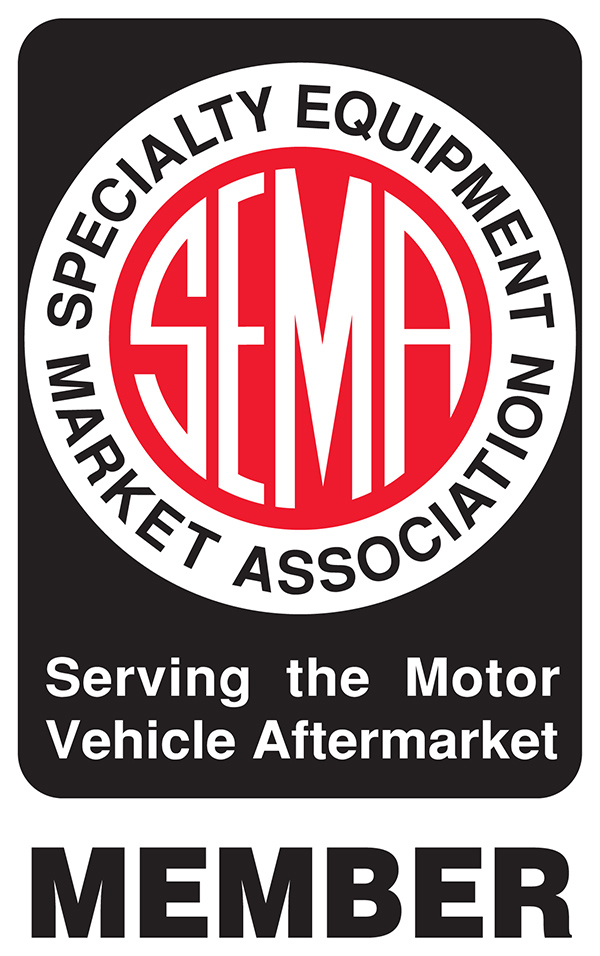
As car experts, we know all about the principal drawbacks of buffing a car, how to avoid them and much more. Automotive detailing is the process of thoroughly cleaning and reconditioning a vehicle’s interior and exterior. Although various techniques like washing, waxing, polishing, and buffing can be used to achieve a polished finish, buffing can have some potential drawbacks. In this blog, we will discuss the possible issues that can arise from buffing a car and how important it is to use the right auto detailing techniques.
The principal drawbacks of buffing a car:
When buffing a car, there are several factors that can contribute to the damage of the clear coat. For instance, over-buffing, using low-quality or damaged pads, and using incorrect pressure can all have a detrimental effect on the clear coat. Additionally, some car owners may use a buffer without properly cleaning the car’s surface first, which can result in the grinding of dirt and debris into the clear coat, leading to damage over time.
In addition to swirl marks and holograms, there are other types of defects that can occur when buffing a car. For example, if the buffer is not used correctly, it can create buffer trails, which are long streaks left behind by the buffer. Buffer trails can be difficult to remove and can be very unsightly. Moreover, if the buffer is used too aggressively, it can cause burn marks on the paint, which can be very difficult to fix.
Buffing can also lead to an uneven paint finish if the pressure applied during buffing is not consistent. Uneven pressure can cause certain areas of the car to be buffed more than others, leading to an uneven finish. Additionally, using the wrong type of pad or buffing in the wrong direction can also cause an uneven finish.
Chemical damage can occur when the wrong type of chemical is used during the buffing process. Some chemicals are too abrasive and can strip away the clear coat, leading to significant damage. In addition, some chemicals can react negatively with the car’s paint, leading to discolouration or even complete removal of the paint in severe cases.
To prevent these drawbacks, it’s important to use the right tools and techniques when buffing a car. Car owners should make sure to use a clean surface, high-quality pads, and the correct type of chemicals for their car’s finish. Additionally, it’s important to pay close attention to the pressure being applied during buffing and to ensure that the buffer is being used in the correct direction. By following these tips and precautions, car owners can avoid the potential drawbacks of buffing their cars and keep their cars looking great for years to come.
To avoid these potential issues, it is crucial to use proper auto detailing techniques when buffing a car. Using the right kind of buffing pad, applying the right amount of pressure, and using the right chemicals are some prevention strategies. By paying attention to these suggestions and adopting the necessary safety precautions, you can prevent the potential drawbacks of buffing a car and ensure that your car looks great for years to come. Check out our products especially designed for polishing the exterior here.
In conclusion, while buffing can help restore a car’s gloss and luster, it is important to be aware of its potential drawbacks. Buffing can harm the clear coat, produce swirl marks and holograms, give an uneven paint finish, and damage the paint job chemically. Using appropriate auto detailing techniques and taking necessary precautions can prevent these potential drawbacks and help you achieve a polished finish that will last. Remember, auto detailing is a meticulous process that requires attention to detail and expertise to ensure a high-quality finish.

Watch as water beads off the deck with our super hydrophobic coatings.

Protect the paintwork from UV damage and keep its vibrant colour despite the conditions.

Let the fear of a rough docking be a thing of the past with a 10H coating.

With minimal maintenance, our products are guaranteed to provide protection for years to come.

With our chemical and contaminant resistant coating, the surface is kept clean. Needing only minor occasional maintenance.

Trusted in 70+ countries, Onyx Coating is the top choice for professionals and car owners seeking premium protection.

Our ceramic coatings adhere to the surface making it resistant to corrosion and oxidation and contamination-free.

Bonds tight with the surtace to maintain a uniform cover and protect the surface evenly.
If you are interested in our products or keen to work with us, send us a message and we will get in contact with you to schedule a quick call or contact us via our email info@onyxcoating.com
Once this information has been received our team will review the accounts and get into contact with you.
With the world’s first N1 nano coating product under our name, we are one of the most advanced automotive protection providers in the market.
Sign up for the latest offers & promotions




© ONYX COATING 2025. All Rights Reserved.